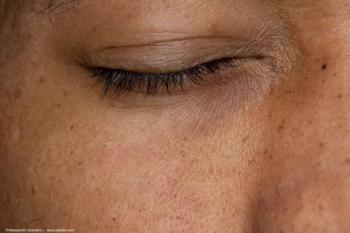
Dr. Shields presents Zimmerman Lecture on PAM
A study on the natural course of primary acquired melanosis of the conjunctiva (PAM) shows that there is no risk of progression to melanoma if there is no atypia, with increasing risk for mild to severe atypia.
A study on the natural course of primary acquired melanosis of the conjunctiva (PAM) shows that there is no risk of progression to melanoma if there is no atypia, with increasing risk for mild to severe atypia.
It also appears that the extent of clock hours of the pigmented lesion is important in predicting the natural course of the disease, said Jerry A. Shields, MD, director of the oncology service at Wills Eye Hospital of Thomas Jefferson University, Philadelphia. Dr. Shields gave the annual Zimmerman Lecture in a combined meeting of the American Academy of Ophthalmology and the American Association of Ophthalmic Pathologists.
PAM is present in about 30% of the Caucasian population of the United States, although most cases do not need treatment. To learn more about the natural course of PAM following diagnosis, Dr. Zimmerman and colleagues studied 311 eyes in 276 patients. Initially, 64% were observed, 34% underwent resection and cryotherapy, and 1% required chemotherapy or other treatment. At three years follow-up, 16% had enlargement and 8% had progressed to melanoma. However, among the enlarged cases, 29% had progressed.
Among lesions that were biopsied for atypia, there was no progression to melanoma if there were no atypia. If atypia were present, the rate of progression was 13%. Atypia was divided into mild or severe; only 1 case with mild atypia progressed (about 2%) versus 32% of the cases of severe atypia.
"We generally tell these patients that there's a 30% chance that a suspicious lesion might enlarge and a 10% chance that it might evolve to melanoma," Dr. Shields said.
Statistical risk factors predictive of PAM enlargement included prior excision elsewhere, the extent in clock hours of the pigmented lesion, corneal involvement, and underlying diabetes and hypertension. In a multivariate analysis, the only significant risk factor was prior excision.
Although few cases of PAM require treatment, this step should be strongly considered early in the course of disease if risk factors are present because of the potentially for malignancy, Dr. Shields said.
Newsletter
Don’t miss out—get Ophthalmology Times updates on the latest clinical advancements and expert interviews, straight to your inbox.


















































.png)


